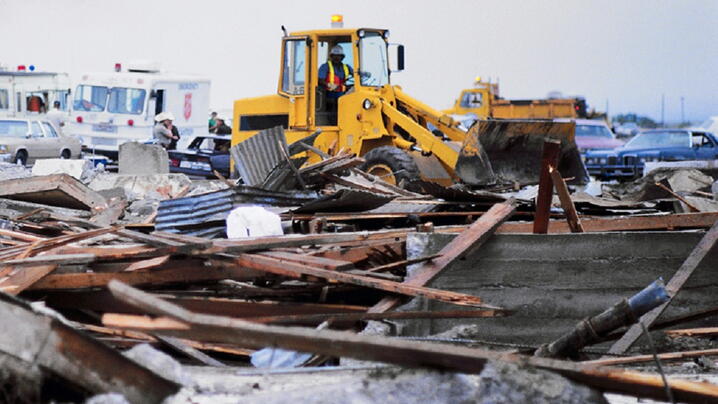
Submitted by Hagerty Consulting, ICMA Strategic Partner
Local government officials face a sobering reality in 2019: They are more responsible for disaster preparedness and recovery than ever before.
Emergency management is changing, and it is changing dramatically. Just ask FEMA. Its official analysis of the 2017 hurricane season sent a strong signal, reinforced by its strategic plan, stating that recovery must be “federally supported, state managed, and locally executed.” FEMA calls for “decreasing the amount […] of time the federal incident workforce supports federally-declared disasters.” It is clearly working to reverse the trend in recent decades of increasing federal involvement. The average number of FEMA staff deployed to a disaster increased from 500 in 1989 to more than 1,500 in 2009.
Beyond these signals from FEMA, the Disaster Recovery Reform Act, signed into law on October 5, 2018, contains mechanisms by which FEMA will start to shift responsibility to states and locals, along with some smart reforms to its public assistance and individual assistance programs.
The increasing severity, prevalence, and cost of disasters, however, are not the only reasons local government leaders need to focus on emergency management in 2019 and beyond.
In the face of global trends like climate change, this paradigm shift in how this country prepares for and recovers from disaster means that local leaders must shoulder increasing responsibilities.
Urbanization, climate change, and population growth continue to expose more and more people and property to natural disasters. Thanks to three major hurricanes and historic wildfires, 2017 was the most expensive year for disasters in U.S. history with more than $300 billion in damage. Unfortunately, 2018 offered no respite from disaster events, with historic hurricanes and wildfires.
And we have reason to believe that the impact of disasters will only get worse in the coming years. The 2018 National Climate Assessment predicts intensifying wind and rain events and increasing temperatures, which could lead to strong storms, more severe wildfires, and greater disaster damage. The National Climate Assessment states that “Recent decades have seen a profound increase in forest fire activity over the western United States and Alaska" and a 2015 study reported that the area burned by wildfires will increase by 77 percent by 2050. Extreme rainfall events are far more common as nine of the top 10 years in recorded history with single-day rainfall records took place after 1990.
All of this gives reason to believe that the pendulum is now swinging back to a more hands-off approach by the federal government.
These two trends – rising disaster exposure coupled with reduced direct Federal support – means that local government leaders need to be ever more vigilant in preparing their communities for future disasters. Here are a few things to keep in mind as you prepare to meet the disaster challenges of 2019 and beyond:
1. Mitigate the effects of disasters—before the disaster occurs.
Hazard mitigation investments have a significant return on investment – cited in one study as $6 for every $1 spent. And the recently-passed DRRA calls for pre-disaster mitigation funding equal to 6% of all federal disaster expenses – a major increase in funds available to communities to prepare before disaster hits. To take advantage of the new funds, communities should develop hazard mitigation plans and identify shovel-ready projects to protect vulnerable public facilities, infrastructure, and housing. Keep an eye out for FEMA’s announcement of this new funding, which is likely later in summer 2019, with the application period open in the fall.
2. Plan with state, federal, local, civic, and private sector partners.
Local governments are ultimately responsible for helping their communities prepare for, respond to, and recover from disasters. All disasters are local. Still, state, federal, nonprofit, private corporations, individuals stakeholders all have a key role. Do not prepare in isolation! Coordinate with adjoining municipalities to implement direct mutual aid arrangements, regional plans, and joint exercises. Work with state and municipal partners through mutual aid agreements. And engage the private sector, nonprofits, and individuals to plug in easily to provide further support.
3. Build a culture of preparedness in your community.
One of the three overarching goals in FEMA’s strategic plan is to “build a culture of preparedness” across the nation, and we agree that it will require this kind of recalibration to adequately prepare for disaster events in the coming years.This means that every government agency needs to integrate disaster preparedness considerations into their ongoing planning and operations, and every individual and family has to take steps to be prepared. This change starts at the top—local leaders set the tone for the whole community. Encourage residents to be prepared to help themselves and their neighbors.People with means and good health should look out for those with disabilities or who may face challenges posed by poor health, poverty, advanced age, or language.
Hagerty Consulting is an ICMA Strategic Partner and sponsor of the 2019 ICMA West Coast Regional Conference, March 20–22, 2019, in Reno, Nevada.
New, Reduced Membership Dues
A new, reduced dues rate is available for CAOs/ACAOs, along with additional discounts for those in smaller communities, has been implemented. Learn more and be sure to join or renew today!
